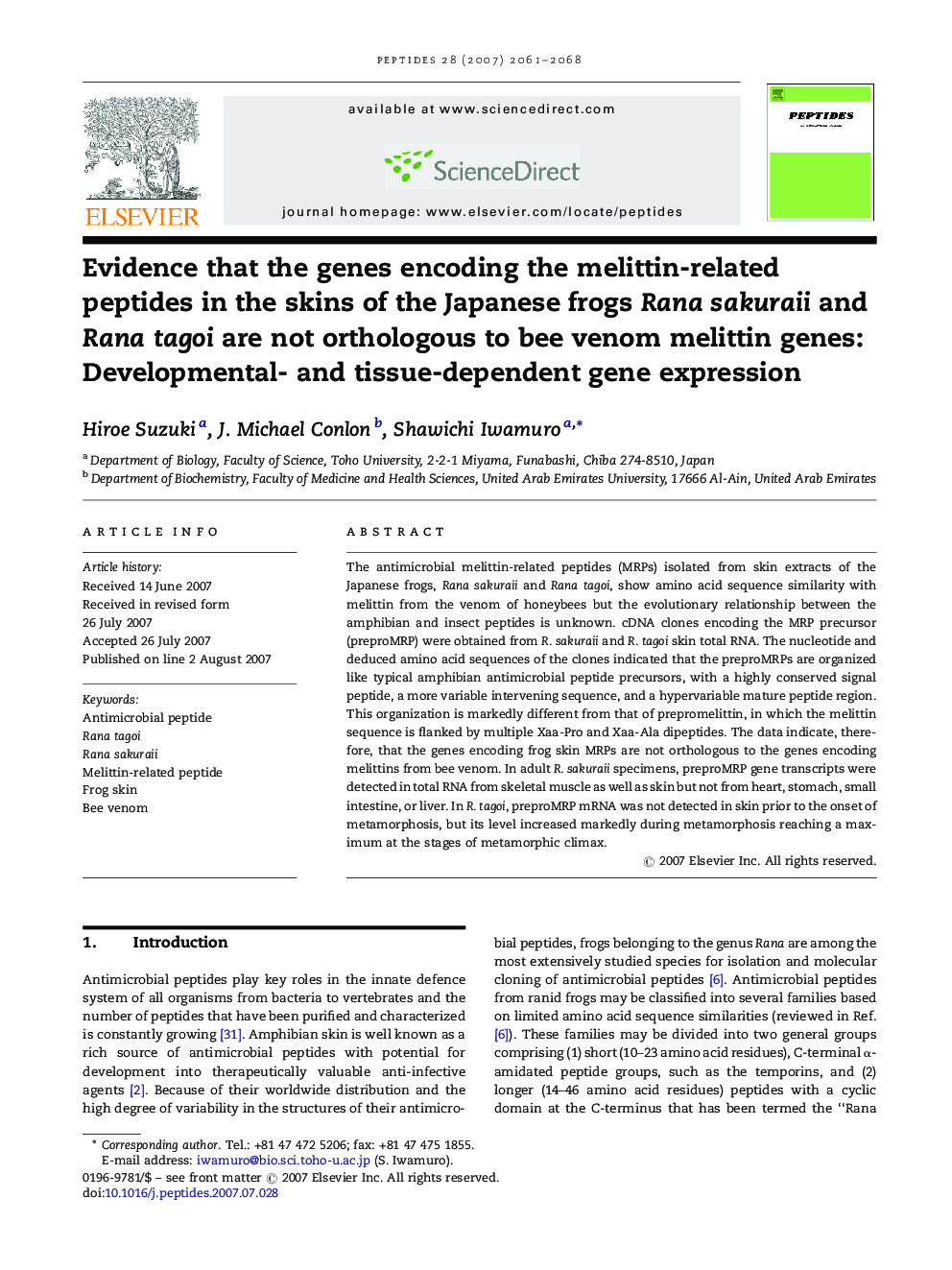| Article ID | Journal | Published Year | Pages | File Type |
|---|---|---|---|---|
| 2007713 | Peptides | 2007 | 8 Pages |
The antimicrobial melittin-related peptides (MRPs) isolated from skin extracts of the Japanese frogs, Rana sakuraii and Rana tagoi, show amino acid sequence similarity with melittin from the venom of honeybees but the evolutionary relationship between the amphibian and insect peptides is unknown. cDNA clones encoding the MRP precursor (preproMRP) were obtained from R. sakuraii and R. tagoi skin total RNA. The nucleotide and deduced amino acid sequences of the clones indicated that the preproMRPs are organized like typical amphibian antimicrobial peptide precursors, with a highly conserved signal peptide, a more variable intervening sequence, and a hypervariable mature peptide region. This organization is markedly different from that of prepromelittin, in which the melittin sequence is flanked by multiple Xaa-Pro and Xaa-Ala dipeptides. The data indicate, therefore, that the genes encoding frog skin MRPs are not orthologous to the genes encoding melittins from bee venom. In adult R. sakuraii specimens, preproMRP gene transcripts were detected in total RNA from skeletal muscle as well as skin but not from heart, stomach, small intestine, or liver. In R. tagoi, preproMRP mRNA was not detected in skin prior to the onset of metamorphosis, but its level increased markedly during metamorphosis reaching a maximum at the stages of metamorphic climax.
